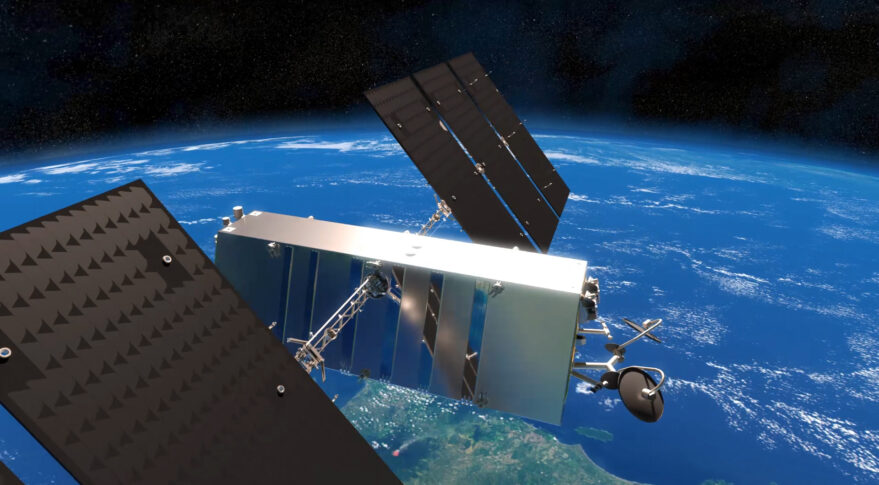
Telesat to order 100 fewer satellites for LEO constellation (Image Credit: Space News)
TAMPA, Fla. — Increasing costs and delays have forced Telesat to downsize plans for 298 low Earth orbit satellites by a third to keep within its $5 billion budget.
The Canadian satellite operator plans to order just 188 satellites plus 10 in-orbit spares from Thales Alenia Space, Telesat CEO Dan Goldberg said during the company’s May 6 earnings call.
That is still enough for the Telesat Lightspeed network to provide “something like 10 terabits of capacity” globally, according to Goldberg, which is more capacity than all current satellites in geostationary orbit combined.
Telesat had previously planned to provide 15 terabits of capacity with 298 operational LEO satellites for the government and enterprise markets it aims to serve.
However, Telesat had to rethink the constellation after Thales Alenia Space alerted the company in October that it had run into supply chain shortages, which have pushed out the service’s planned debut a year to 2026.
Despite downsizing Telesat Lightspeed, Goldberg expects the project will continue to cost $5 billion amid rising inflation.
He said Telesat has lined up 4.2 billion Canadian dollars ($3.3 billion) so far to fund the project from existing financial resources and Canadian government funding.
The company is waiting to get commitments for covering the rest of Telesat Lightspeed’s cost before signing an order contract with Thales Alenia Space.
Goldberg said he expects to have “a pretty good sense of where we’re sitting” with export credit agencies to complete the project’s financing by the end of June.
He said Telesat was close to securing these funds before having to pause discussions last year to update its constellation plans.
Changing NGSO landscape
The delay in ordering Telesat Lightspeed satellites gives Amazon’s proposed LEO constellation Project Kuiper more time to catch up with the company.
Amazon announced multi-billion dollar contracts April 5 for launching most of Project Kuiper’s 3,236 satellites over five years. Although Amazon did not say when launches will start, it must deploy half the constellation by July 2026 under its Federal Communications Commission license.
Project Kuiper is mostly focused on consumer broadband, similar to SpaceX’s rapidly expanding Starlink network that currently has more than 2,100 satellites in LEO, but could seek a share of Telesat Lightspeed’s enterprise and government markets.
OneWeb’s planned LEO constellation is focused on enterprise and government markets. The British startup had deployed 428 satellites, or 66% of its planned total fleet, before pausing launches in March after being caught up in sanctions following Russia’s invasion of Ukraine.
OneWeb has signed launch agreements with SpaceX and India’s space agency to resume satellite deployments this year.
Telesat has previously said its LEO constellation could capture 1% of a total addressable market worth 430 billion Canadian dollars, implying revenue of 4.3 billion Canadian dollars.
The company reported 186 million Canadian dollars in revenue for the three months to the end of March, a 2% decrease compared with the same period in 2021 when adjusted for foreign exchange rates.
The revenue drop was primarily due to less direct-to-home broadcast business in North America and a fall in equipment sales to Canadian government customers, according to Telesat.
Goldberg said U.S.-based satellite broadcaster Dish Network renewed a contract to use its Anik F3 Ku-band satellite for at least another two years but at a lower rate.
Dish Network is using “a little more than half” the capacity it had previously been taking on Anik F3, he said, and most of the remaining capacity it did not renew was sold to a mobility services provider for the maritime market.








